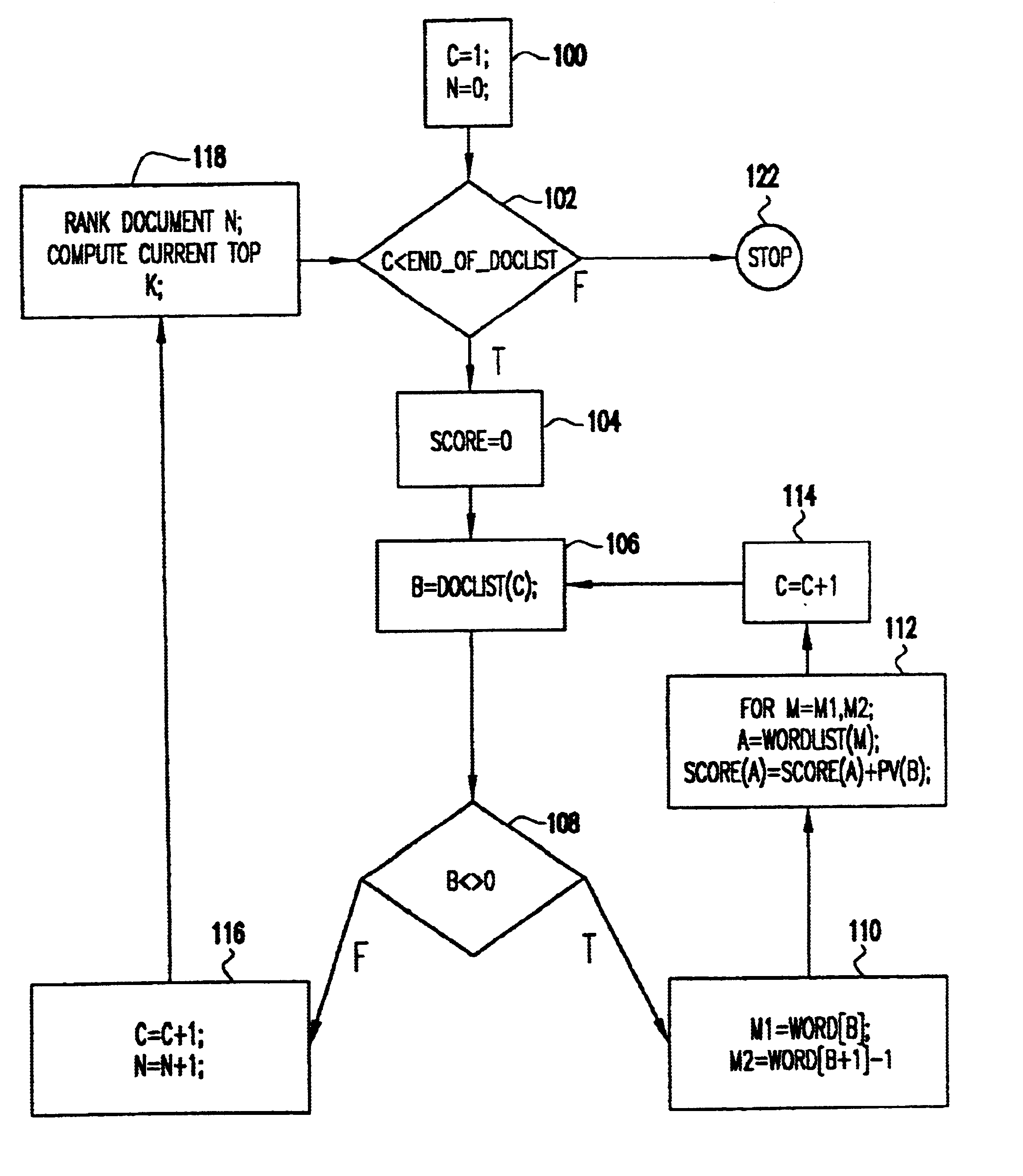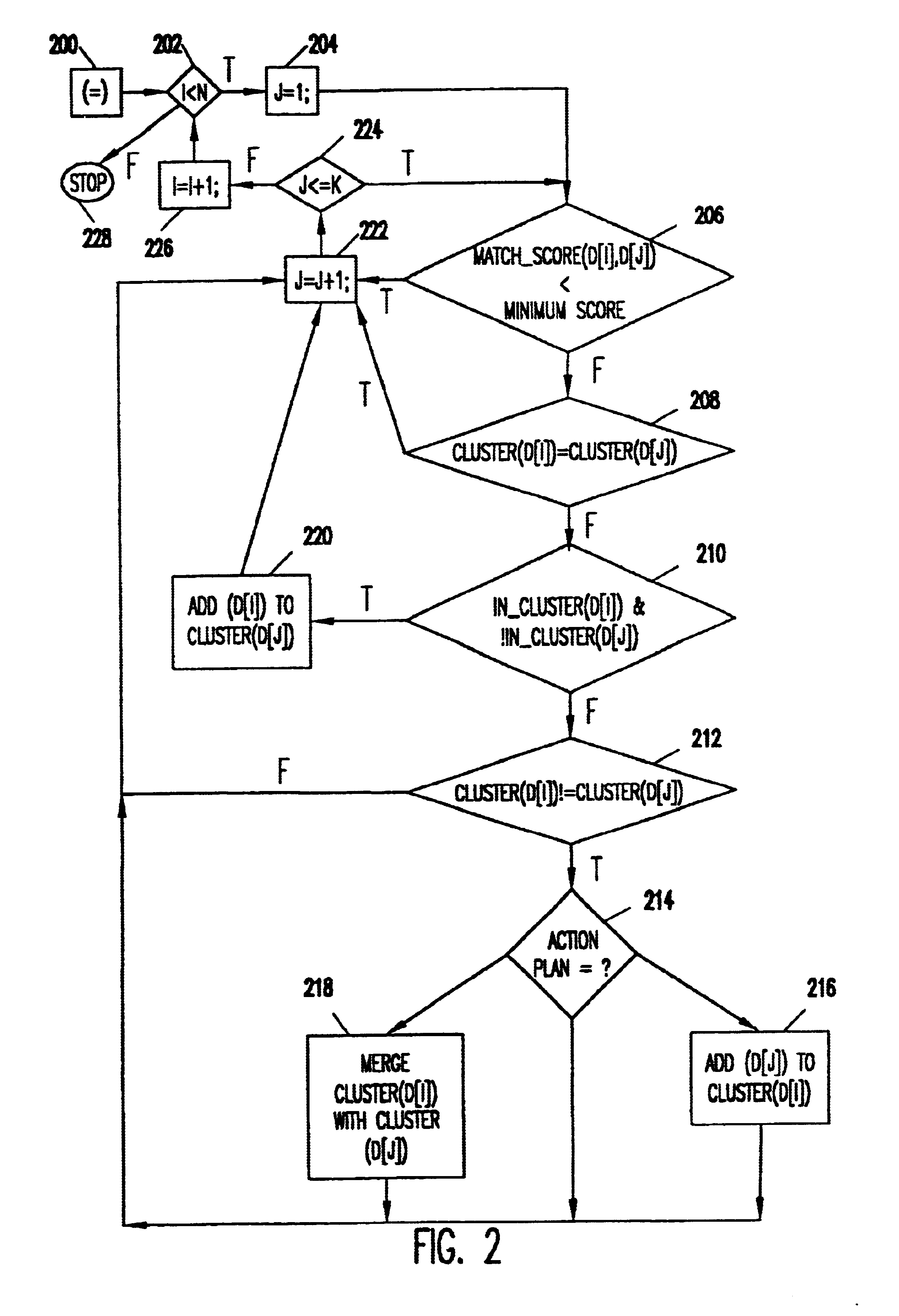Lightweight document clustering
- Summary
- Abstract
- Description
- Claims
- Application Information
AI Technical Summary
Benefits of technology
Problems solved by technology
Method used
Image
Examples
Embodiment Construction
The clustering algorithm of the present invention processes documents in a transformed state, where the documents are represented as a collection of terms or words. A vector representation is used. In the simplest format, each element of the vector is the presence or absence of a word. The same vector format is used for each document; the vector is a space taken over the complete set of words in all documents. Clearly, a single document has a sparse vector over the set of all words. Some processing may take place to stem words to their essential root and to transform the presence or absence of a word to a score, such as TF-TDF, that is a predictive distance measure. In addition, weakly predictive words (i.e., stop words) are removed. These same processes can be used to reduce indexing further by measuring for a document vector only the top k-words in a document and setting all remaining vector entries to zero.
An alternative approach to selecting a subset of features ...
PUM
 Login to View More
Login to View More Abstract
Description
Claims
Application Information
 Login to View More
Login to View More - R&D
- Intellectual Property
- Life Sciences
- Materials
- Tech Scout
- Unparalleled Data Quality
- Higher Quality Content
- 60% Fewer Hallucinations
Browse by: Latest US Patents, China's latest patents, Technical Efficacy Thesaurus, Application Domain, Technology Topic, Popular Technical Reports.
© 2025 PatSnap. All rights reserved.Legal|Privacy policy|Modern Slavery Act Transparency Statement|Sitemap|About US| Contact US: help@patsnap.com



